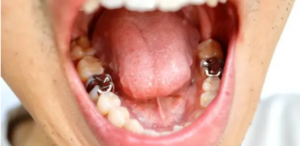Tooth fillings are a dental procedure that restore damaged teeth to their standard shape and function. They also help prevent further decay and protect weakened teeth from further damage.
 Different types of tooth fillings carry varying costs, depending on the type of material used. The most common materials include composite resin, ceramic, and glass ionomer. For professional dental fillings Adelaide services, check this out.
Different types of tooth fillings carry varying costs, depending on the type of material used. The most common materials include composite resin, ceramic, and glass ionomer. For professional dental fillings Adelaide services, check this out.
Tooth-coloured fillings
Tooth-coloured fillings (or composite) are more natural-looking than silver amalgam fillings and are an excellent option for patients concerned about their smile’s appearance. This treatment is relatively non-invasive and can usually be completed in one appointment. After the affected tooth has been numb, we will remove any decay, and then the tooth-coloured composite resin will be placed in layers and cured with ultraviolet light.
The best thing about composite fillings is that they bond with the surface of your teeth, so you won’t have to worry about them affecting how you bite or chew. It is why they are also a good choice for closing gaps between teeth, repairing chipped teeth and changing the shape of your teeth to make them appear straighter or even.
Gold fillings are another option, but they are less commonly used, tend to be more expensive and require a two-visit process. Glass ionomer fillings are a more modern dental material made from a combination of glass particles, synthetic resin and a setting ingredient.
Amalgam fillings
Amalgam fillings are a mixture of metal alloys, including silver, copper, tin and mercury. They have been used for over 160 years and have a good record. However, amalgam use has decreased recently as the composite resin alternative has become more popular. For professional dental fillings Adelaide services, check this out.
Replacing your amalgam fillings is unnecessary unless you have specific concerns or health reasons. Some patients with amalgam fillings experience sensitivity around the tooth that has a filling, usually due to cracks underneath the filling.
Composite resin, also known as white fillings, is a more modern dental material bonded (glued) to your teeth. They are hard to tell apart from your natural teeth and can last 5-7 years. A small amount of your natural tooth has to be removed to place a composite filling. Composite fillings don’t conduct hot and cold as well as amalgam fillings, so they may need replacing more frequently.
Ceramic fillings
Ceramic fillings are made from a ceramic material that resembles a natural tooth structure. They are highly durable and resist staining. They are also kinder to your teeth, as they conserve more of the tooth’s healthy surface.
The procedure for a ceramic filling involves removing the decayed area of your tooth under local anaesthetic, cleaning and shaping the tooth before making the new ceramic restoration. It is then bonded in place with solid cement.
Ceramic fillings can be completed in one appointment, avoiding the need for moulds or a return visit. They are a safer alternative to amalgam replacement, as the ceramic is not prone to mercury leakage. They may, however, fracture more easily than composite resin fillings. Your dentist can advise you on the best restorative materials for your needs. For professional dental fillings Adelaide services, check this out.
Glass ionomer fillings
Glass ionomer cement (GIC) is a family of direct restorative materials characterized by solid adhesion to tooth surfaces, flexibility in physical features, and lower failure rates. They also exhibit a unique anti-carious action.
They consist of a fluoro-aluminosilicate glass powder and polyacrylic acid liquid. The acid-based chemical reaction causes displacement of ions from the dentin, and the resulting carboxylate groups form an electro-neutral bond with calcium in the enamel.
The result is a demineralization and remineralization process in the teeth, which strengthens the enamel, reduces surface sensitivity, and protects against further caries. GICs also release fluoride, which helps maintain the teeth and reduces the risk of tooth decay.
However, they are less durable than composite resin fillings and more prone to chipping. Therefore, they are typically used for temporary work and fillings below the gum line. They can restore baby teeth as a ‘healing’ base under stronger composites. If you want to learn more about the treatment options available to you, call us today!